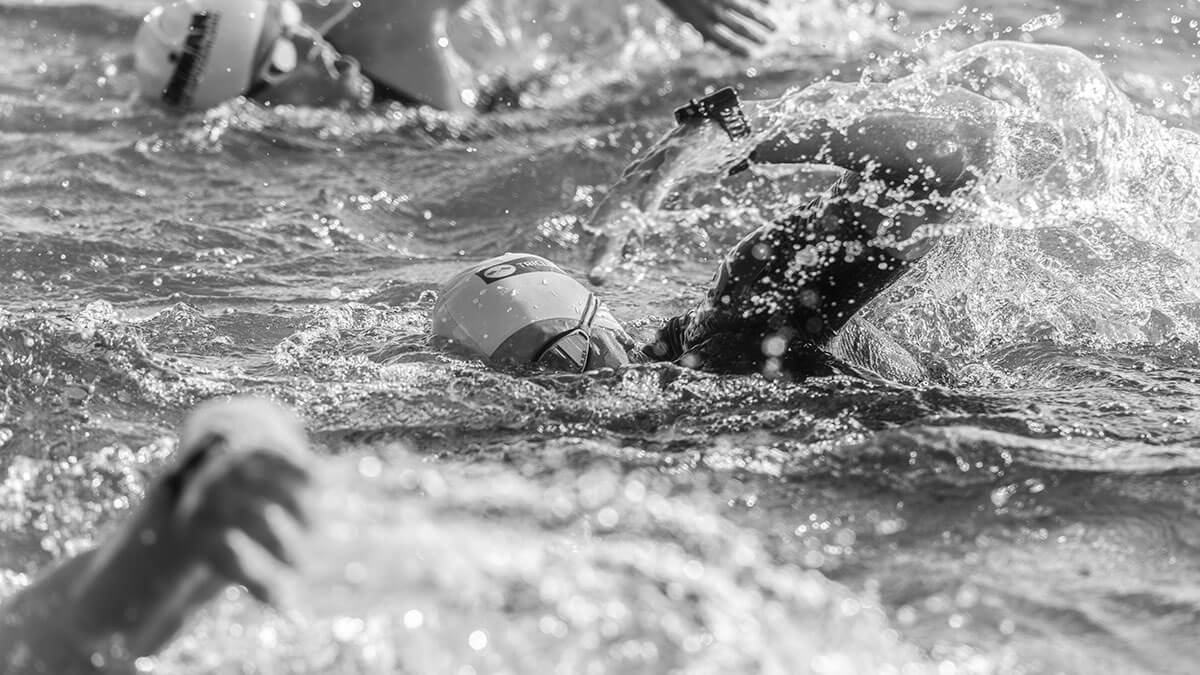You are an Ironman! The most prestigious status in the world, for a triathlete. These are 4 words that evoke powerful emotions, require a routine of daily awakening before sunrise and workouts crammed in between professional, family and social responsibilities. And they are chock full of race strategies, and hundreds and hundreds of hours in training.
These are your first thoughts, when you first utter the words “I’m training for Ironman”. OK, I’ll admit you may also be thinking about the total cost required to embark on this new adventure.
Ironman: Training right, training minimal
From personal experience, as an Ironman and as a running and triathlon coach, myself, I can assure you there is a big misconception regarding the amount of training required to finish Ironman. And this misconception leads people to abandon the thought entirely. Many people fail to participate in the event, before even trying.
Willingness is key
Believe it or not, you can cross the finish line yourself. You can enjoy the positive aura coming from cheering fans, as you walk the red carpet. Incidentally, did you know you can become an Ironman with a mere 8-10 hours of training per week?
No, I am not crazy, I have done this time and again with extremely busy athletes, being their coach. And we’ve shared a few thousand photos with a huge smile on our faces, at the finish line; like real Ironman “finishers” should. Please, note the subtle difference in meaning, as I used “finishing”, not “winning”, to describe the Ironman reward.
Do you need to be a professional athlete?
Undoubtedly, sharing the podium with people of common accomplishment in such a painfully difficult event, must mean you’ve gone through a lot. You’d assume one should most likely be a professional athlete to do it; or demonstrate availability to train within the range of 20-30 hours per week.
Is Ironman possible for a hobbyist?
Most of us are not professional triathletes. We’re closer to recreational or hobbyist athletes, with very limited availability for training. So, read on, as this article is going to change your view about long-distance triathlon training. And will most likely take you the distance from wannabe athletes to actual Ironman finishers.
Quality over quantity in training
It’s a well known fact that quality can beat quantity, almost in every single aspect of our lives. And training can be no different. In our modern era, coaches, methodologies, researches, etc. have made tremendous progress towards improving the ways we train and how we perceive training, as our reality. At the same time, old school coaches with a “The more, the better” mindset, tend to fade away into memory. And that seems to be for the better; the real revolution in exercise physiology shows us the way towards truly optimized training. That is, without junk miles or hours and hours of training, without purpose.
Right now, I’m sure you’re thinking: “How is it possible to finish a 10-13 hour event with only minimal training?” According to recent research, Ironman events require a solid aerobic base, a high level of fractional utilization of VO2max, and exceptional energy conservation in cycling and running. So, the solution to this problem is to find – or come up with – the optimal training methodology, to improve upon the aforementioned parameters.
Your greatest Ironman ally
Your greatest ally in executing a minimal training program is the use of high-intensity exercise; but in an optimally distributed way. Of course, we cannot skip long training days entirely. But we can limit them and use them in a way they can prove beneficial, rather than a complete waste of time. For example, we can include long sessions on a bi-weekly basis. We can use our weekends for higher intensity exercise, in between. And why not do it at the desirable race intensity? That way, we will allow our body to respond and become accustomed to this kind of stimuli; making the necessary adaptations, as we go.
High intensity and polarized training
Moreover, with the proper selection of high-intensity workouts (1-2/week), you can achieve the desirable adaptations, as needed. These adaptations will have you on your way to crossing the finish line. But wait! There’s more!
We can also use the famous “polarized training” method – or the “80-20” rule – in a minimal training program (8-10 hours per week). A well spent eight hours of training at “zone 2” and a well-distributed two hours at “zone 4-5” every week, can lead us to our best attainable form, without getting to suffer from an overtraining syndrome or having to cope with long training hours away from our family.
These are great methods. And, as mentioned, my athletes smash their personal bests and finish their very first Ironman triathlon with a “quality over quantity” mindset. Make no mistake, these are great achievements. And they typically can’t wait to repeat them.
Your time for Ironman has come
It’s time to re-think the way you consider Ironman training. Allow yourself some self-indulgence and live this unique experience. You can either get the whole nine yards of preparation or just find yourself at the starting line. And remember! If you train “as smart as you can” – as opposed to “as hard as you can” – the red carpet will be waiting for you!! You CAN be an Ironman! And we can help you get there.
